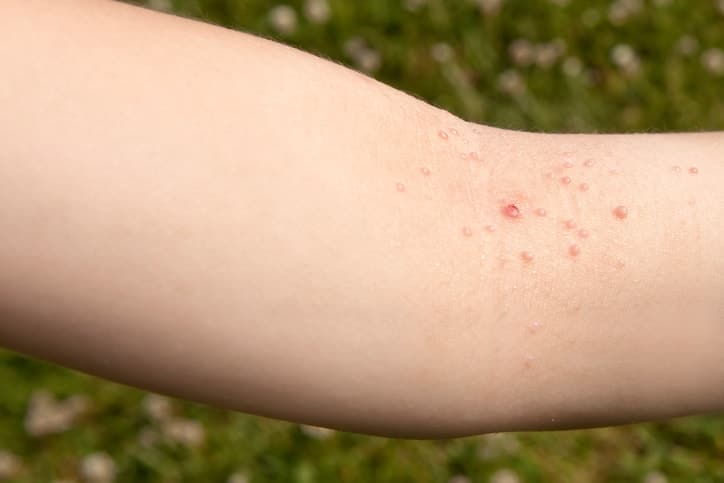
What is Molluscum Contagiosum?
Molluscum contagiosum is a skin condition caused by the virus of the same name. It produces raised bumps on the upper layers of the skin.
What Are the Symptoms of Molluscum Contagiosum?
The main symptom of molluscum contagiosum is characteristic bumps, which may appear alone or in patches of up to twenty. They are usually asymptomatic and disappear once the infection is over. Molluscum contagiosum has a relatively long incubation period, during which there are no symptoms. While the average incubation period is 2-7 weeks, it can take up until the virus has been present for six months before it shows any outward signs.
How do you know if you have molluscum contagiosum?
The lesions associate with the disease are:
- Small, shiny, and smooth.
- White, pink, or flesh-colored.
- Firm and dome-shaped, with a dimple in the center.
- Filled with waxy material more prominent in the center.
- Between the size of a pinhead and a pencil eraser.
- Can appear almost anywhere except the palms and the soles of the feet.
Is Molluscum Contagiosum Contagious?
Yes. You can get the disease by touching the infectious lesions on the skin of someone who is infected with the virus. It can also be transmitted through direct contact with clothing or other items that touch the bare skin of an infected person.
What Else Causes Molluscum Contagiosum?
Frequent vectors of infection include things like toys, clothing, and athletic equipment. It is especially important that children be watched carefully and encouraged to take precautions to avoid spreading the infection through ordinary play.
Adults should be extremely alert to the possibility of infection with sexual partners. Another common issue is the use of athletic equipment that has been touched by an infected person, such as items shared by a whole athletic team – even towels.
It’s also crucial to remember that you can spread the disease to different areas of your own body. Whenever you wash or shave in an area with present lesions caused by the disease, you should wash your hands to reduce the likelihood of further spread.
What Are the Risk Factors for Molluscum Contagiosum?
There are relatively few risk factors that influence your odds of getting molluscum contagiosum. Being aware of the disease and minimizing physical contact with infected people is usually all it takes to stay safe. However, there are some unusual cases to be aware of.
Children who suffer from eczema should receive treatment for the condition right away. Eczema can leave children more likely than others to get a molluscum contagiosum infection. Medications and lifestyle changes can be helpful in controlling eczema.
Be aware of the possibility of molluscum contagiosum in sexual partners and take appropriate steps. Sexual abstinence can reduce the risk of contracting illness if a partner has the disease. Male or female condoms cannot be relied upon to stop the spread of the virus.
Molluscum contagiosum is more likely in those who:
- Are between the ages of 1-10 years old.
- Live in tropical areas.
- Have a weakened immune response.
- Have atopic dermatitis, a form of eczema.
- Participate in full-contact sports.
How is Molluscum Contagiosum Treated?
Treatment is usually only necessary for those experiencing large lesions centralized on the face and neck and those who have conditions predisposing them to a serious infection. Without treatment, the infection will typically fade away on its own. Treatment options include:
- Cryotherapy, in which bumps are frozen off.
- Laser therapy, where bumps are destroyed by laser.
- Curettage, which uses traditional surgical tools.
- Topical therapy using acids or other chemicals.
Call 954.961.1200 today or fill out the form on this page to request an appointment.






